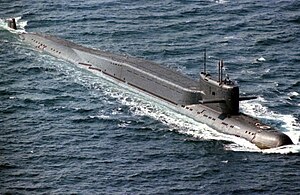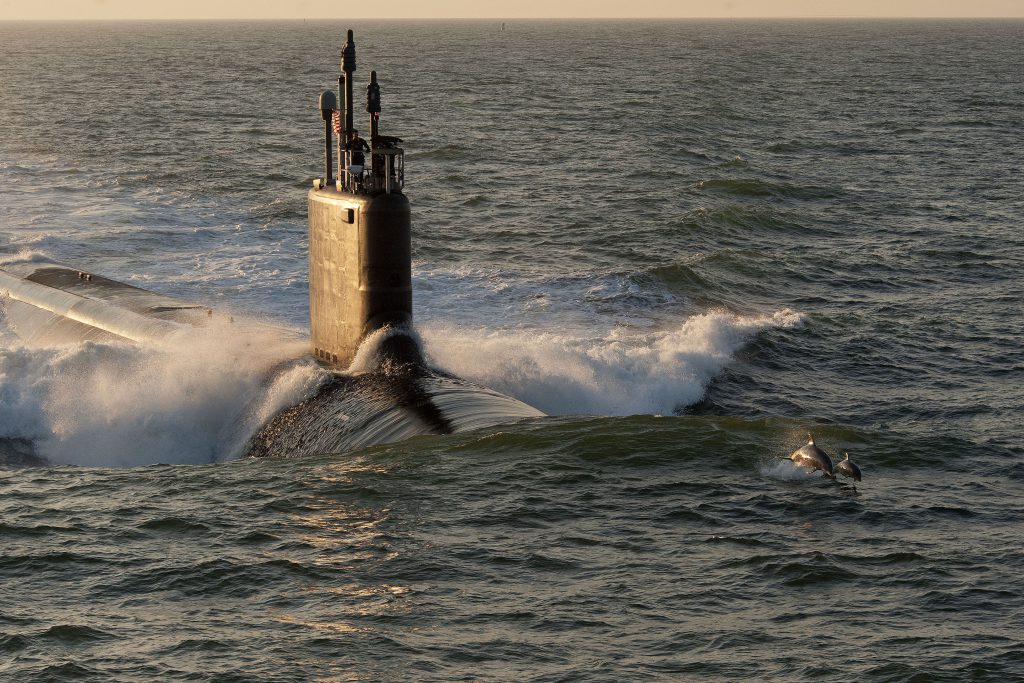 Although there were talks of a nuclear submarine during the Manhattan project, the first nuclear-powered sub took its first swim in 1954; unlike its diesel - electric predecessors, which were made to dive only on occasion and mostly travel by surface, the Nautilus (the first nuclear sub) was made to travel primarily underwater and only surface on occasion. This incredible maneuverability radically changed naval strategies forever.
Although there were talks of a nuclear submarine during the Manhattan project, the first nuclear-powered sub took its first swim in 1954; unlike its diesel - electric predecessors, which were made to dive only on occasion and mostly travel by surface, the Nautilus (the first nuclear sub) was made to travel primarily underwater and only surface on occasion. This incredible maneuverability radically changed naval strategies forever. Soon enough, this being the Cold War, the Soviet Union commissioned their first nuclear sub in ‘58, and after several mishaps was able to place nuclear missiles on Soviet submarines in 1960, the same year that the U.S. placed nuclear missies on its own submarines.
The U.S. Navy developed two kinds of nuclear submarines during the years of the Cold War:
The first was called the Fleet Ballistic Missile Submarine (SSBM) (170 meters), called the “boomer”, which was designed for (you guessed it) launching ballistic missiles at other countries. This sub played an important role in American Cold War deterrence strategy: both sides knew that somewhere in the ocean was a highly mobile enemy submarine carrying enough nuclear cargo to destroy any target, and it’s constantly changing location assured that some enemy submarines would survive the initial confrontation and would be able to attack after the first strike. Therefore, nuclear submarines were crucial for the policy of mutual assured destruction (MAD) that the Cold War desperately clung to in order to prevent world annihilation.

The second type of nuclear submarine was the Attack Submarine (SSN) which didn’t have a catchy nickname, but it was the submarine that made up most of the submarine fleet of the U.S. The SSN was used for hunting missions against enemy submarines, was equipped with anti-sub torpedoes and mines, and was considerably shorter than the Boomer, at 109 meters in length.

Overall, the submarines of the Cold War helped support the policy of deterrence and helped move the field of submarine technology forward.
Sources:
https://science.howstuffworks.com/nuclear-submarine4.htm
https://science.howstuffworks.com/nuclear-submarine3.htm
https://www.navy.mil/navydata/fact_display.asp?cid=4100&tid=300&ct=4
https://submarinesuppliers.org/wp-content/uploads/2015/07/130607-O-ZZ999-010-PCU-Minnesota-SSN-783-June2013-1024x683.jpg
https://nationalinterest.org/sites/default/files/main_images/Akula_class_submarine_stern_view_0.jpg
I found this post regarding nuclear subs very interesting. More specifically, I liked the focus on the use of nuclear submarines in strategic MAD. Nuclear subs was one device out of three named the nuclear triad. The other two included bombers and missiles. The strategic idea behind the triad was to spread out nuclear devices so that there would never be a chance for another country to completely destroy all of another's nuclear arsenal. In the event of a nuclear attack, hidden subs would have the ability to counter attack, thereby ensuring MAD. Today, nuclear submarines are still used in the triad to deter attack, though at a much lower level than during the Cold War.
ReplyDeletehttps://www.britannica.com/topic/nuclear-triad
Despite the heavy use of submarines during the Cold War, I found that dolphins, surprisingly, were used as well. Norwegians first observed the Soviets militarily training dolphins as another part of the arms race. These dolphins were trained to spot suspicious objects, detect submarines, and detect underwater mines. According to retired Colonel Baranets of Norway, dolphins were trained to place explosives on enemy ships. The Soviet Union even spent 18,000 euros on purchasing dolphins. This isn't limited to Russia though; today America trains both dolphins and sea lions as part of its US Navy Marine Mammal Program in San Diego. Nevertheless, the topic of marine mammal military use is rarely discussed and often tried to keep secret, so it's surrounded by rumors.
ReplyDeleteSubmarines are always cool to read about and I've always wondered how nuclear submarines can stay submerged for so long. Well obviously as implied by the name, "nuclear submarines", they all carry a nuclear reactor, but the interesting thing is that some submarines have as many as two. In addition, previously, submarines were limited by how much power they had on board. But electric or diesel power was usually inefficient and submarines were prone to resurface often for refueling. However, nuclear submarines eliminated this problem as nuclear reactors provide massive amounts of energy and pretty much eliminate the need for refueling. This energy is used to clean the air as well as provide fresh water for the crew. Thus, the limiting factor isn't energy or air anymore, but rather food and the mental sanity of the crew. A nuclear submarine can stay submerged for as long as 90 days.
ReplyDeletehttps://www.wired.co.uk/article/nuclear-submarine-astute
https://science.howstuffworks.com/transport/engines-equipment/submarine2.htm
I really liked reading this blog and found it fascinating! During the nuclear age, submarines have been transformed to be equipped nuclear arms to keep up with the MAD concept. One thing I discovered was that the engines powering submarines are now nuclear powered, meaning the heat creates steam for the turbine which turns the propeller. The heat comes from nuclear fission in the fuel and goes to the steam generator. The entire system is kept under pressure to prevent water from boiling. The circulation of the water is what drives the engine. This saves a huge amount of space because it eliminates the requirement of fuel storage. The fuel is also inexpensive but the running costs is high which explains why only the military uses nuclear powered submarines. The nuclear engine is also employed on huge aircraft carriers.
ReplyDeleteSource: https://en.wikipedia.org/wiki/Nuclear_marine_propulsion